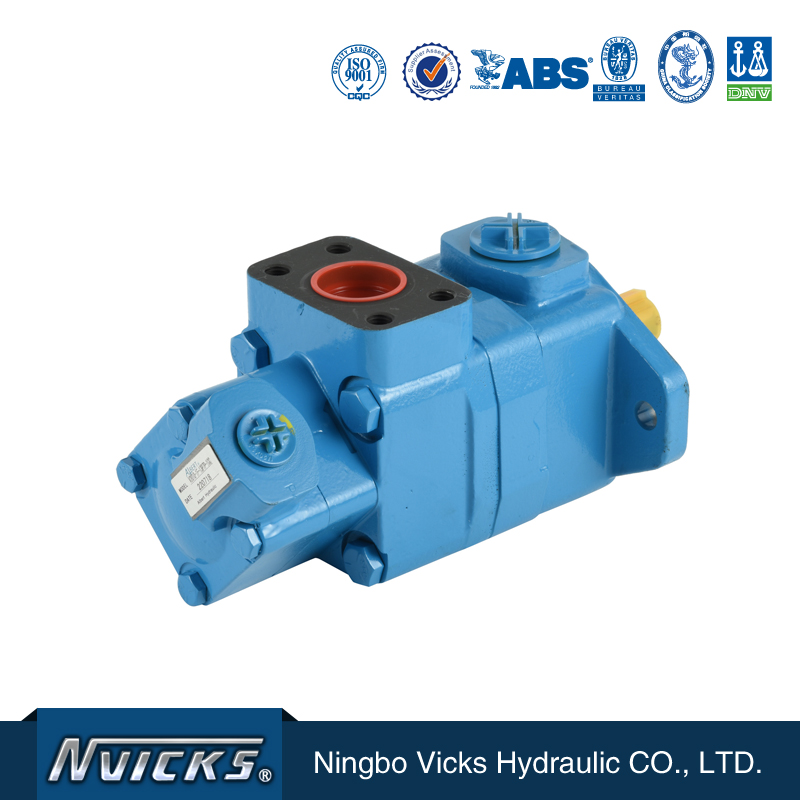The Functions of Hydraulic Vane Pumps:
Vane pump are typically viewed as a middle ground option between gear and piston pumps. They are restricted by the maximum pressure rating that they can withstand, which is an indication of how fragile they are in comparison to gear and piston pumps. Due to their susceptibility to dirt, which manifests itself as a rapid performance decline when operating in contaminated fluids, these components are not extensively employed in mobile equipment. This restricts them to low-pressure industrial power units and makes them unsuitable for environments that need low noise levels. They also typically cost less than piston pumps, although this benefit is becoming less prevalent over time.

The operation of hydraulic vane pumps:
The vanes within the eccentric housing of vane pumps are rotated by the drive shaft when the pump operates. On the back of the vanes, pressure is exerted, driving them out against the outer ring face. Due to the outer ring’s form or the eccentricity between the outer ring and rotating shaft, the vanes generate an expanding volume area that draws fluid from the reservoir. In actuality, atmospheric pressure pressing on top of the fluid in the reservoir pushes the fluid into the new space, not the pump. This could cause cavitation or aeration, both of which are detrimental to the fluid. Once the maximum volume has been reached, timing grooves or ports open to allow a volume-decreasing region to expel fluid into the hydraulic system. The system’s pressure is generated by the load, not by the pump supply.
Various types of vane pumps:
Fixed and variable displacement designs of vane pumps are available.
A balanced design with two chambers is typical of fixed displacement pumps. Accordingly, each revolution involves two pumping cycles.
One chamber only exists in variable displacement pumps. Since the outer ring is moved in relation to the inner ring, which positions the vanes, the variable displacement system functions. No flow occurs when the two rings revolve around the same center (or only enough to keep the vanes pressurised and provide case leakage to keep the pump cool). However, as the outer ring is pushed away from the driving shaft, the space between the vanes changes, which causes fluid to be sucked into the suction line and pumped out through the supply line.
A roller vane design, as the name implies, uses rollers rather than vanes and is a sort of pump we haven’t covered before. This device, which is less expensive and less effective and is primarily utilized in automotive power steering systems, is not generally sold outside of OEM (Original Equipment Manufacturer) applications.
Guidelines for operation and maintenance:
Each pump’s most susceptible component is the tips of the vanes. Because the vanes are exposed to pressure and centrifugal forces, the region where the tip passes across the outer ring is crucial. Vibrations, filth, pressure peaks, and high local fluid temperatures can all cause the disintegration of the fluid film, resulting in metal-to-metal contact and a shortened service life. In the case of certain fluids, the strong fluid shear forces generated at these places might harm the fluid and hence shorten its service life. Despite the fact that this effect is not exclusive to vane pumps.
Suction head pressures are crucial for vane pumps and must not exceed the minimum value specified by the manufacturer. Always fill the tank’s suction line and pump casing beforehand. Always ensure that the installation has a positive suction head, i.e. that the pump is below the fluid level, but never allow the pump to self-prime. Keep in mind that as soon as people remove any valve or disrupt the circuit in any way, it is possible that all the liquids will drain back into the reservoir. This will necessitate the priming of all pumps without positive pressure heads.
Article Source:https://www.vickshydraulic.com/news/how-much-do-you-know-about-hydraulic-vane-pumps
Media Contact
Company Name: Ningbo Vicks Hydraulic Co., Ltd
Email: Send Email
Country: China
Website: https://www.vickshydraulic.com/
